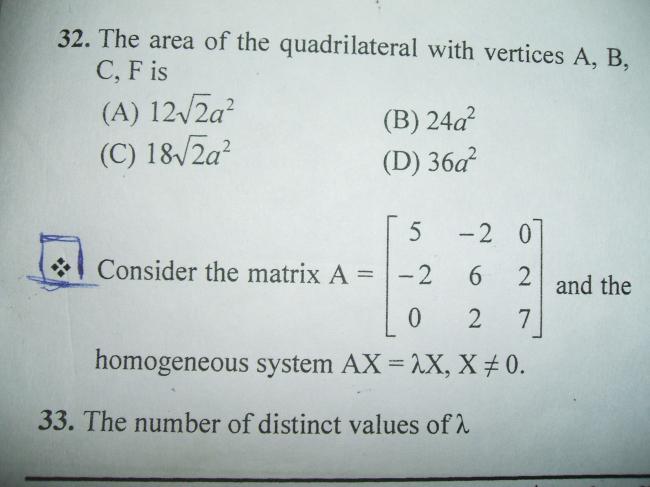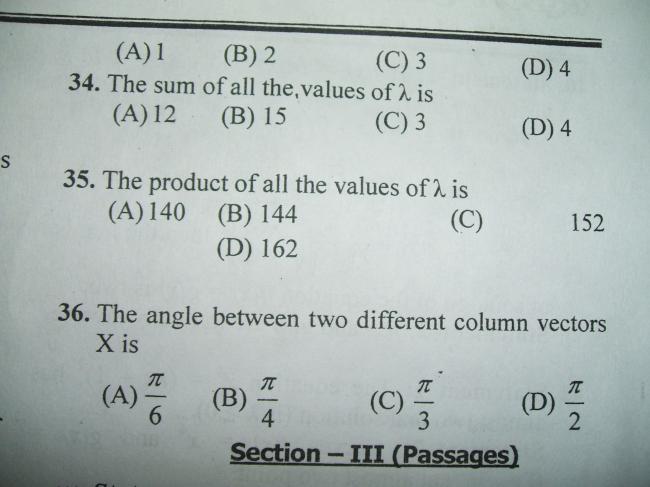hey mani... do u mind giving d question/post no.s of unsolved questions...!!???
i'll try them now... [1]
here i will post the doubts of my tests and the questions in which i am struck


figure se tho justified nahi hain... sorry... didn't observe dat... [2]
lekin solve karne par tho wahi coordinates aaye... so juzz consider d point n not it's position...!!! [4]
next tym se perfect fig.s post karunga... [1]
hey mani... do u mind giving d question/post no.s of unsolved questions...!!???
i'll try them now... [1]
please tell me the method to them
bye the way they may not the perfect answers (marked by me)
i got the same acd in 10 th i applied liebnitz theorm then i got f(x)=ln(4+tanx)is it crct?
@richa
i have asked these question coz i am doubtful in them
if u think ur work is justified please post ur solution
i was unable to find df(x)/dx
i thoght about integration 4 this one
so please post ur method[1]
applying liuebnitz i got
2 f(x)f`x=f(x)2 sec2x/4+tan x
as f(x) is not identically 0 we can cancel it out both sides thus f`x=sec2x/4+tanx
integrating bth sides we get
f(x)=ln (4+tan x)(c=0 )
so now plugging in the values we get acd
richa
11th waala
i was a complete washout
i left the whole paragraph
please help anywhere u can
for 11th i have a doubt for what is being asked
so better leave 11th and try the rest[1]
Mohd Bhai bahut kaam kiya iss mein aapne[1]
par mere ko 13,14 ke answers nahin mil rahe[2]
aur ek aur baat aapke graph se do u think ur E coordinte is justified???
ya thats rite m gettin it as underoot(85/2)
side of d squre
side of equi tringle is (root 17)/2
so DE is addition of both
n area of trngle is ACF is
1/2(root85/2)(root17)/2
yaar figure poora galat hain... extremely sorry... i've deleted it... it's completely mis-guiding...
my brain's not working... [2] [2]
well, is baar figure nahi hain... but these are d co-ordinates of all d points...
A (1,2) ; B (-3,1) ; C (3/2,0) ; D (5/4 + √3 , 1 + √3/4) ; E (1/2,-9/2) ; F (-4, -7/2) ...........
I'm quite sure dat these are d correct co-ordinates...!
Now i guess u can solve all the questions...!!! [1]
for post #11
Q19
B : m x n
X : n x 1
Y : n x 1
B' : n x m
X' : 1 x n
[B]2 x 3 = b1 b2 b3
b4 b5 b6
[X]3 x 1 = x1
x2
x3
[Y]3 x 1 = y1
y2
y3
[B]'3 x 2 = b1 b4
b2 b5
b3 b6
[X]'1 x 3 = x1 x2 x3
X'B'1 x 2 = x1b1 + x2b2 + x3b3 x1b4 + x2b5 + x3b6
BY2 x 1 = b1y1 + b2y2 + b3y3
b4y1 + b5y2 + b6y3
(BX)' (BY) = (X'B')(BY)1 x 1 = x1y1(b12 + b42) + .......
X'Y1 x 1 = x1y1 + x2y2 + x3y3
(BX)' (BY) ≠X'Y : Therefore Statement 1 is false
Statement 2 is true. ( Δ(I+A) ≠0 )
Hence ans. is D
ANSWERS TO #14
11 > A
12 > B
13 > C
14 > D
@MAK THE COORDINATES U GAVE IN #39 FAILS IN THE CASE OF 14
Q3
If f(x)=x2-x-6(edited), x>1/2 and g be the inverse of f . The value of g/(x) when f(x)=14
(a)1/4
(b)1/9
(c)1/3√5
(d)2/3√5
chk this for working
http://en.wikipedia.org/wiki/Inverse_function#Inverses_and_derivatives
For the 1st question, to obtain the values of \lambda, solve the equation
\det(A-\lambda I_3)=0
Here I3 is a third order identity matrix. We have
\left|\begin{array}{ccc}5-\lambda & -2 & 0\\-2 & 6-\lambda & 2 \\ 0 & 2 & 7-\lambda \end{array}\right|=0
\Rightarrow\ \lambda^3 - 18\lambda^2 + 99\lambda -162 =0
Since it is cubic in \lambda, there are three distinct values. It is easy to see that the sum of these values of \lambda is 18 and their product 162.